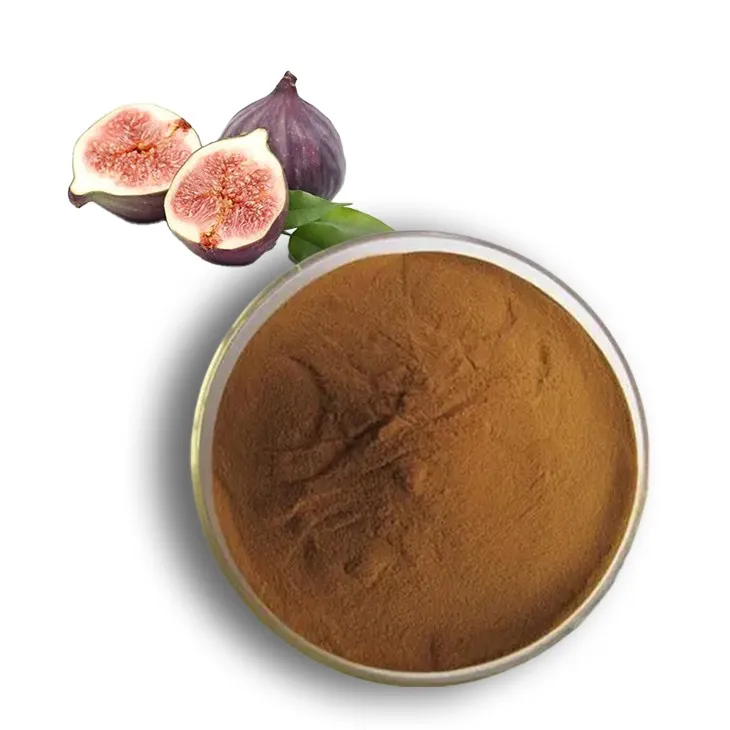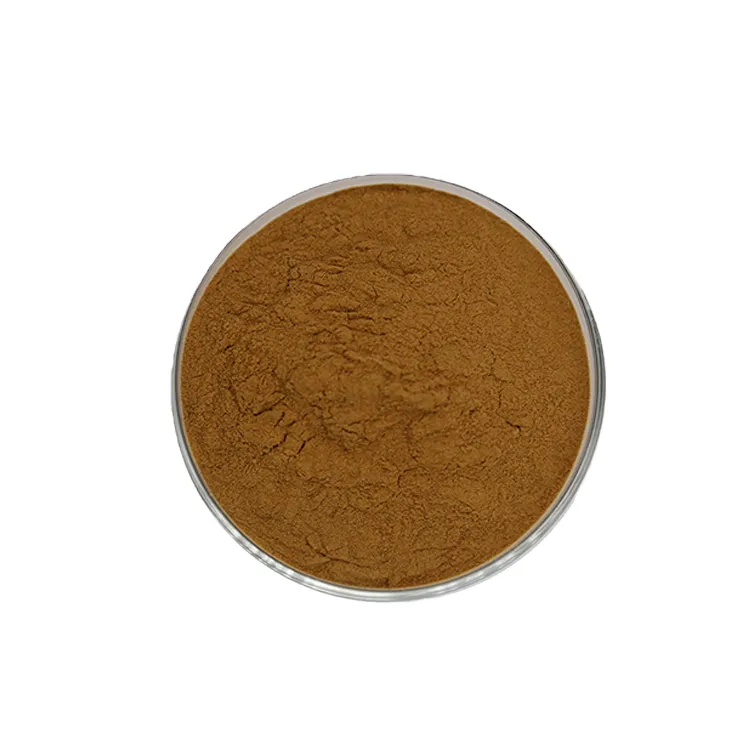- 0086-571-85302990
- sales@greenskybio.com
The flavor of ripe figs and natural fig extracts.
2024-11-13

1. Introduction
The taste of ripe figs is a symphony of flavors that has intrigued humans for centuries. Ripe figs possess a unique taste profile that is both sweet and earthy, with a rich, mellow flavor that is hard to replicate. Alongside this, natural Fig Extracts are emerging as a significant ingredient in various industries. Their ability to encapsulate the essence of figs has led to their increased use in food, skincare, and health supplement sectors. This article aims to explore the flavor of ripe figs in-depth and analyze the importance of natural Fig Extracts from multiple perspectives.

2. The Taste of Ripe Figs
2.1 Sweetness
Ripe figs are renowned for their natural sweetness. This sweetness is not overpowering but rather a gentle, honey - like quality. The sugars in figs, such as fructose, glucose, and sucrose, contribute to this delicious taste. As the fig ripens, the starches within it are converted into sugars, intensifying the sweet flavor. This natural sweetness makes figs a popular choice for those with a sweet tooth who prefer a more natural and unrefined source of sweetness compared to processed sugars.
2.2 Earthiness
Another prominent aspect of the taste of ripe figs is their earthy flavor. It is a flavor that evokes a sense of the soil and nature. This earthiness is likely due to the fig's growth process, absorbing nutrients from the earth. The combination of this earthy note with the sweetness creates a complex and balanced taste. It gives figs a depth of flavor that is often described as rustic and grounding.
2.3 Aroma
The aroma of ripe figs is an integral part of their overall flavor experience. Figs emit a sweet, fruity, and slightly musky smell. This aroma is a result of the various volatile compounds present in the fruit. When a fig is ripe, these compounds are released, creating an alluring scent that can be detected from a distance. The aroma not only enhances the anticipation of tasting the fig but also contributes to the overall enjoyment when consumed.

3. Natural Fig Extracts: Production and Properties
3.1 Production Methods
- Solvent Extraction: One common method of producing natural fig extracts is solvent extraction. In this process, a suitable solvent, such as ethanol or water, is used to extract the active compounds from figs. The figs are typically crushed or ground first to increase the surface area for extraction. The solvent is then removed through evaporation, leaving behind the concentrated fig extract.
- Press Extraction: Another method is press extraction. Here, ripe figs are pressed to extract the juice, which can then be further processed into a fig extract. This method is more straightforward and often retains more of the natural flavors and nutrients as it does not involve the use of solvents.
3.2 Nutritional Properties
Natural fig extracts retain many of the nutritional properties of the whole fig. Figs are a good source of dietary fiber, vitamins (such as vitamin K, vitamin B6), and minerals (such as potassium, magnesium). These nutrients can be present in the fig extract, making it potentially beneficial for health. For example, the fiber content can aid in digestion, while the potassium can contribute to heart health.
3.3 Flavor - related Properties
The flavor - related properties of natural fig extracts are what make them so valuable in various industries. They contain the same or similar flavor compounds as ripe figs, allowing them to impart the characteristic fig flavor. The extracts can be concentrated, enabling a small amount to have a significant impact on the flavor of a product. They also have a long shelf - life, which is advantageous for commercial applications.

4. The Use of Natural Fig Extracts in Food
4.1 Bakery and Confectionery
- In the bakery and confectionery industry, natural fig extracts are used to add a unique flavor to products. In cakes, for example, fig extract can be added to the batter to give a sweet and earthy undertone. It can also be used in fillings for pastries, such as in fig - filled tarts or Danish pastries. The extract provides a more consistent and intense fig flavor compared to using fresh figs, which may vary in flavor depending on their ripeness.
- Cookies can also benefit from fig extract. A touch of fig extract can transform a simple cookie into a more sophisticated treat, with a flavor that is both familiar and exotic.
4.2 Dairy Products
- Fig extracts are finding their way into dairy products as well. In ice cream, they can add a delicious fig flavor that pairs well with the creaminess of the ice cream. The extract can be used in both traditional and artisanal ice cream recipes.
- Yogurts can also be flavored with fig extract. It gives a natural and healthy - tasting alternative to artificial fruit flavors. The fig flavor in yogurt can be combined with other ingredients like nuts and honey to create a more complex and indulgent product.
4.3 Beverages
- In the beverage industry, natural fig extracts are used in a variety of drinks. In fruit juices, adding fig extract can enhance the flavor profile, especially when combined with other fruits like apples or pears. It can also be used in smoothies, where it not only adds flavor but also potential nutritional benefits.
- Fig - flavored teas are also becoming popular. The fig extract can be combined with tea leaves to create a unique and fragrant blend. These teas can be served hot or cold, depending on the preference of the consumer.
5. The Use of Natural Fig Extracts in Skincare
5.1 Moisturizing Properties
Fig extracts are rich in components that are beneficial for the skin's moisture balance. The natural sugars and polysaccharides in figs can help to attract and retain water in the skin. This makes fig extracts a valuable ingredient in moisturizers. They can penetrate the skin's surface and provide long - lasting hydration, leaving the skin feeling soft and supple.
5.2 Anti - aging Effects
- Fig extracts also possess potential anti - aging effects. They contain antioxidants such as phenolic compounds and flavonoids. These antioxidants can help to neutralize free radicals in the skin, which are responsible for causing premature aging. By reducing the damage caused by free radicals, fig extracts can help to reduce the appearance of wrinkles, fine lines, and age spots.
- Furthermore, the nutrients in fig extracts, such as vitamins and minerals, can support the skin's natural renewal process. They can stimulate collagen production, which is essential for maintaining the skin's elasticity and firmness.
5.3 Skin - soothing Properties
Some people find that fig extracts have a soothing effect on the skin. This may be due to their anti - inflammatory properties. They can be used in skincare products for those with sensitive or irritated skin. Fig - based creams or lotions can help to calm redness and reduce inflammation, providing relief to the skin.
6. The Use of Natural Fig Extracts in Health Supplements
6.1 Digestive Health
As mentioned earlier, figs are a good source of dietary fiber. Natural fig extracts, which retain some of this fiber, can be beneficial for digestive health. Fiber helps to promote regular bowel movements and can prevent constipation. In health supplements, fig extract can be combined with other digestive - enhancing ingredients to create a product that supports a healthy digestive system.
6.2 Antioxidant Support
The antioxidants present in fig extracts can also play a role in health supplements. These antioxidants can help to boost the body's overall antioxidant defenses. They can protect cells from oxidative damage, which is associated with various diseases such as cancer, heart disease, and neurodegenerative disorders. By including fig extract in health supplements, consumers can potentially increase their antioxidant intake.
6.3 Nutritional Supplementation
Fig extracts can provide a source of essential vitamins and minerals in health supplements. For individuals who may not get enough of these nutrients from their diet, fig - based supplements can be a convenient way to fill the gap. This is especially important for those with specific dietary restrictions or those who follow a vegetarian or vegan lifestyle.
7. Conclusion
The flavor of ripe figs is a complex and alluring combination of sweetness, earthiness, and a unique aroma. Natural fig extracts, which capture this essence, have found their way into a wide range of applications. From enhancing the flavor of food products to providing skincare benefits and contributing to health supplements, fig extracts are a versatile and valuable ingredient. As research continues to uncover more about the properties of figs and their extracts, it is likely that their use will become even more widespread in the future.
FAQ:
What makes the flavor of ripe figs so special?
The flavor of ripe figs is special because it combines a natural sweetness with a unique aroma. The sweetness comes from the sugars that develop as the fig ripens, and the aroma is a complex blend of esters, aldehydes, and other volatile compounds that give figs their characteristic smell.
How are natural fig extracts made?
Natural fig extracts are typically made by extracting the flavor and other beneficial compounds from figs using a solvent, such as ethanol or water. The figs are first crushed or ground to increase the surface area, and then the solvent is added to extract the desired components. The resulting extract is then concentrated and purified to remove any unwanted substances.
What are the applications of natural fig extracts in food?
In food, natural fig extracts can be used to add flavor to a variety of products. They can be used in baked goods, such as cakes and cookies, to add a sweet and fruity flavor. They can also be used in dairy products, such as ice cream and yogurt, to enhance the flavor. Additionally, fig extracts can be used in savory dishes, such as sauces and marinades, to add a touch of sweetness and complexity.
What are the benefits of using natural fig extracts in skincare?
Natural fig extracts have several benefits in skincare. They are rich in antioxidants, which can help protect the skin from damage caused by free radicals. They also have moisturizing properties, which can help keep the skin hydrated. Additionally, some studies suggest that fig extracts may have anti - aging effects, such as reducing the appearance of wrinkles and fine lines.
Are there any potential side effects of using natural fig extracts?
While natural fig extracts are generally considered safe, some people may be allergic to figs. Additionally, if fig extracts are consumed in large quantities, they may cause digestive problems, such as diarrhea or stomach cramps. However, these side effects are rare and usually only occur in people with a pre - existing sensitivity to figs.
Related literature
- The Chemistry and Bioactivity of Fig (Ficus carica L.)"
- "Fig Extracts: Properties and Potential Applications in Food and Cosmetics"
- "The Nutritional and Medicinal Value of Figs"
- ▶ Hesperidin
- ▶ Citrus Bioflavonoids
- ▶ Plant Extract
- ▶ lycopene
- ▶ Diosmin
- ▶ Grape seed extract
- ▶ Sea buckthorn Juice Powder
- ▶ Fruit Juice Powder
- ▶ Hops Extract
- ▶ Artichoke Extract
- ▶ Mushroom extract
- ▶ Astaxanthin
- ▶ Green Tea Extract
- ▶ Curcumin
- ▶ Horse Chestnut Extract
- ▶ Other Product
- ▶ Boswellia Serrata Extract
- ▶ Resveratrol
- ▶ Marigold Extract
- ▶ Grape Leaf Extract
- ▶ New Product
- ▶ Aminolevulinic acid
- ▶ Cranberry Extract
- ▶ Red Yeast Rice
- ▶ Red Wine Extract
-
Beetroot Powder
2024-11-13
-
Tongkat Ali Extract
2024-11-13
-
Propolis Extract Powder
2024-11-13
-
Red Vine Extract
2024-11-13
-
Golden Seal Extract
2024-11-13
-
Artichoke Extract
2024-11-13
-
Scutellaria Extract
2024-11-13
-
Avocado Extract Powder
2024-11-13
-
Peppermint Extract Powder
2024-11-13
-
Honeysuckle Pollen
2024-11-13





















